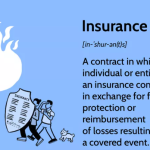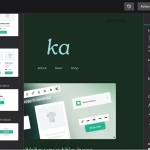Freelancing comes with incredible freedom—you set your own hours, choose your clients, and work from anywhere. But when tax season rolls around, things can get a little complicated. Unlike traditional employees who get a single W-2, freelancers have to track multiple income sources, pay self-employment taxes, and navigate a maze of deductions.
Don’t worry—this guide breaks down everything you need to know about freelancer taxes in simple terms. Let’s dive in!
1. Tracking Your Income
As a freelancer, your income likely comes from multiple clients, platforms, and payment methods. Here’s how to stay organized:
- 1099-NEC Forms – If a client pays you $600 or more in a year, they should send you a 1099-NEC (previously 1099-MISC).
- 1099-K Forms – Payment processors like PayPal, Venmo, or Stripe will send a 1099-K if you receive 5,000+(2024)or2,500+ (2025). Starting in 2026, the threshold drops to $600.
- Cash or Untracked Payments – Even if you don’t get a tax form, you must report all income—the IRS can still see deposits in your bank account.
Pro Tip: Use accounting software (like QuickBooks or Wave) or a simple spreadsheet to track payments throughout the year.
2. Self-Employment Tax: The Freelancer’s Extra Bill
Unlike employees, freelancers pay both the employer and employee portions of Social Security and Medicare taxes—that’s 15.3% of your net earnings (after deductions).

- Example: If you earn 50,000∗∗afterexpenses,you’llowe∗∗7,650 in self-employment tax plus income tax.
- Good News: You can deduct half of this tax (7.65%) when calculating your income tax.
Pro Tip: Set aside 25-30% of each payment for taxes to avoid surprises at tax time.
3. Deductions: Lower Your Taxable Income
The best way to reduce your tax bill? Claim every legitimate business expense. Here are the most common freelancer deductions:

Home Office Deduction
If you work from home, you can deduct a portion of:

- Rent or mortgage interest
- Utilities (electricity, internet)
- Home repairs (if they benefit your workspace)
Rules:
- The space must be exclusively used for work (no shared dining tables).
- You can use the simplified method ($5 per sq. ft., up to 300 sq. ft.) or the actual expense method.
Business Supplies & Equipment
- Laptops, printers, software
- Office furniture (desk, chair)
- Industry-specific tools (cameras for photographers, design software for graphic artists)
Pro Tip: If an item costs over $2,500, you may need to depreciate it (spread the deduction over several years).
Travel & Meals
- Business travel (flights, hotels, rental cars) is 100% deductible if work-related.
- Meals with clients are 50% deductible.
- Commuting to a coffee shop? Not deductible.
Education & Certifications
- Online courses, conferences, or certifications related to your field are deductible.
- Example: A freelance writer can deduct a copywriting course, but not a cooking class.
Health Insurance & Retirement Contributions
- Self-employed health insurance premiums are deductible.
- Solo 401(k) or SEP IRA contributions reduce taxable income.
Warning: Personal expenses (like a gym membership or Netflix) don’t count, even if you use them while working.
4. Quarterly Estimated Taxes: Avoid Penalties
Freelancers don’t have taxes withheld from paychecks, so the IRS requires quarterly estimated tax payments (due in April, June, September, and January).
- How to Calculate: Estimate your yearly tax bill, divide by 4, and pay each quarter.
- Safe Harbor Rule: Pay at least 90% of this year’s tax or 100% of last year’s tax (110% if income >$150,000).
Pro Tip: Use the IRS Estimated Tax Worksheet (Form 1040-ES) or a tax software like TurboTax to calculate payments.
5. Filing Your Taxes: Freelancer-Friendly Options
- Schedule C (Form 1040) – Report freelance income and deductions here.
- Schedule SE – Calculate self-employment tax.
- Deduction Software – TurboTax Self-Employed or H&R Block automatically finds deductions.
Best Option? If your taxes are complex (multiple income streams, large deductions), consider hiring a CPA who specializes in freelancers.
Final Tips for Freelancers
Keep receipts (digital or physical) for at least 3 years in case of an audit.
Separate business & personal accounts—mixing them complicates deductions.
Track mileage if you drive for work (use an app like MileIQ).
Plan for retirement—a Solo 401(k) or SEP IRA lowers taxable income.
Bottom Line
Freelancer taxes can feel overwhelming, but with the right organization and deductions, you can keep more of your hard-earned money. Stay proactive, track expenses, and consider using tax software or a professional to maximize savings.
Need help? TurboTax Self-Employed guides you through freelancer deductions and even finds industry-specific write-offs. Try it today and file with confidence!








